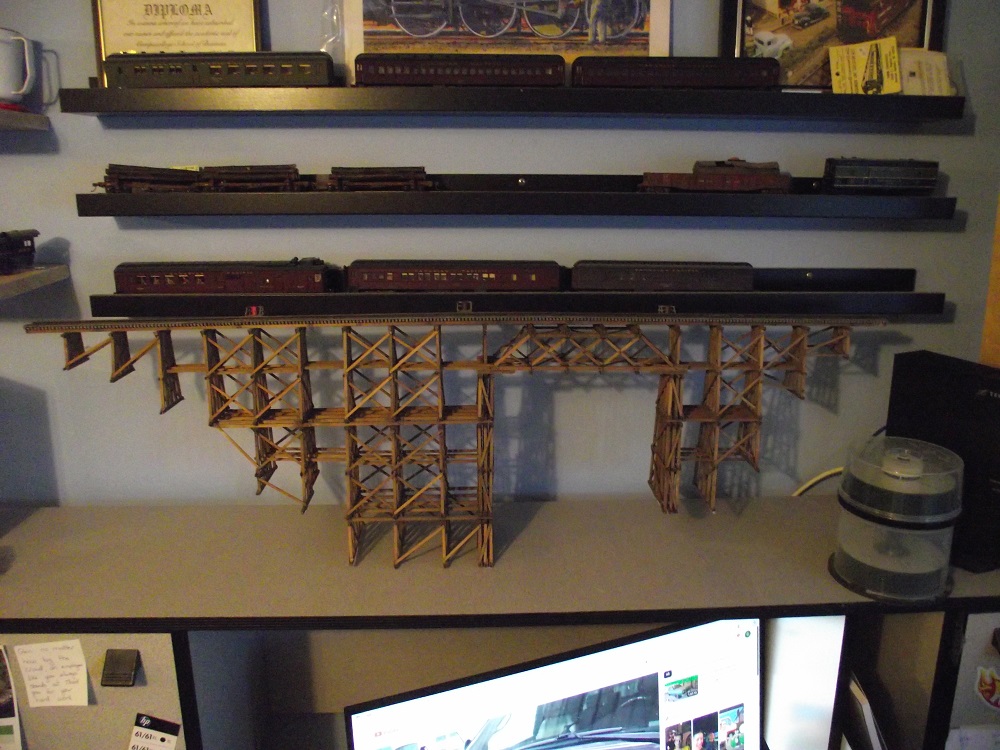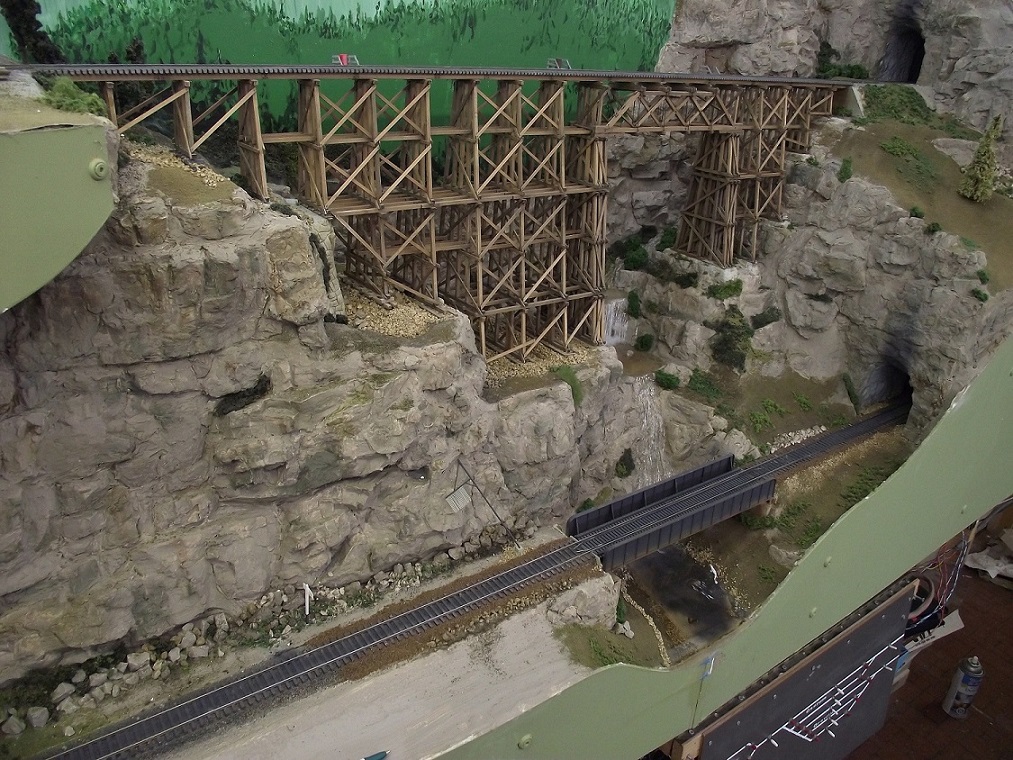05-28-2023, 05:36 PM
Some may have remembered my Hemsley diorama restoration project that I did awhile back. That diorama was part of another modeller's layout who had passed away.
Now I have been given another part of that layout, his centerpiece trestle:

It was removed from his layout pretty much intact but was in storage for a couple years. a number of glue joints have come undone so I'll have to do some repairs. The larger job is to make a base/cradle for it to rest in.
I don't have the room on my layout to install it and it would almost be a crime to cut it down to make it fit.
This is what it looked like on the orgininal builder's layout:


Now I have been given another part of that layout, his centerpiece trestle:
It was removed from his layout pretty much intact but was in storage for a couple years. a number of glue joints have come undone so I'll have to do some repairs. The larger job is to make a base/cradle for it to rest in.
I don't have the room on my layout to install it and it would almost be a crime to cut it down to make it fit.
This is what it looked like on the orgininal builder's layout:


